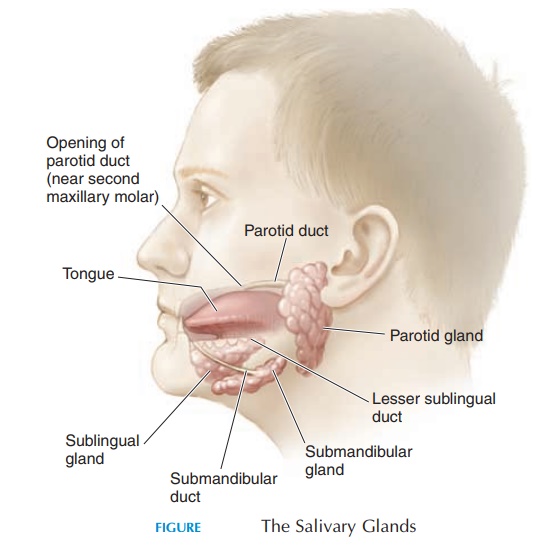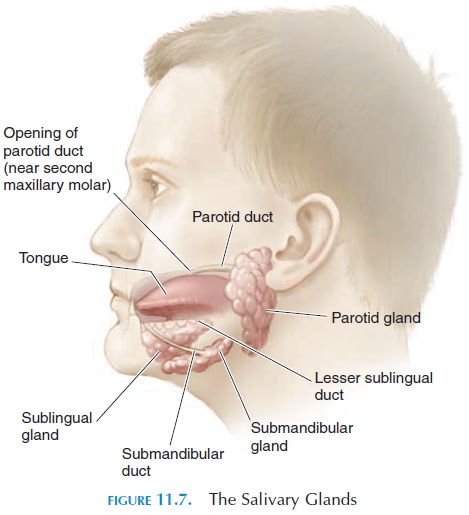Chapter: The Massage Connection ANATOMY AND PHYSIOLOGY : Digestive System
Salivary Glands and Saliva - Structure and Function of Digestive System

SALIVARY GLANDS AND SALIVA
Adjacent to the mouth are many salivary glands (see Figure 11.7), which secrete about 1,500 mL (158.5 qt)
Saliva contains two enzymes that begin digestion of fat and carbohydrates. Mucins (glycoproteins) in the saliva lubricate thefood and protect the mucosa of the mouth. Some im-munoglobulins or antibodies are also present in the saliva as the first line of defense against bacteria and viruses. Other proteins that bind toxins, protect enamel (outer coating of teeth), and attack the walls of the bacteria are also present in the saliva.

Saliva performs many important functions. Saliva makes swallowing easier, keeps the mouth moist, helps with speech by facilitating lip and tongue movement, keeps the mouth and teeth clean, and serves as a solvent for the molecules that stimulate taste sensations. Antibacterial properties are pro-vided to the saliva by antibodies and other proteins.
Salivary secretion is increased by stimulation of the autonomic nerves. Food in the mouth and lower end of the esophagus can increase secretion. It is well known that sight, smell, and even the thought of food can increase salivary production.
There are three pairs of salivary glands. The parotid glands are large and lie beneath the skin,covering the lateral and posterior aspect of the mandible (i.e., anterior to the ears). A duct from the parotid gland empties the saliva into the vestibule near the upper molar tooth. The sublingual glands are located in the floor of the mouth. Many ducts from this gland open under the tongue. The sub-mandibular glands are medial to the mandible onits inner surface, in the floor of the mouth.
Related Topics